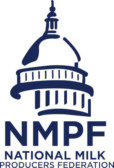The Whole Milk for Healthy Kids Act (H.R.1147) passed the U.S. House of Representatives today by a vote of 330-99. This bipartisan tally in the House sets a strong precedent as the momentum moves to the U.S. Senate, where a companion bill (S.1957) is being led by U.S. Sens. Roger Marshall (R-Kan.) and Peter Welch (D-Vt.) with the support of 9 additional bipartisan cosponsors.
The bill would reintroduce whole (3.25% milkfat) and reduced-fat (2% milkfat) milk to school cafeterias, restoring the two most popular milk varieties to schools. Today's vote and the momentum behind the bill are due in large part to the direct advocacy of IDFA members at legislative fly-ins, meetings and phone calls with legislators, and virtually through the IDFA Campaign Center. In fact, IDFA members and dairy advocates sent approximately 1,000 emails to their legislators in the past week alone.
The focus now turns to the U.S. Senate Committee on Agriculture, Nutrition & Forestry, which has jurisdiction over child nutrition issues. The Senate must consider and pass the Whole Milk for Healthy Kids Act by the end of the 118th Congress, or by January 3, 2025.
Several dairy organizations applauded the move.
“IDFA praises the strong bipartisan passage of the Whole Milk for Healthy Kids Act by the U.S. House of Representatives and calls for swift action on the companion bill in the U.S. Senate so that schools can once again provide children with a wide variety of milk options that deliver essential nutrients and meet their individual needs—whether that be whole or 2%, low-fat, or lactose-free milk.
“Whole and 2% milk provide children with 13 essential nutrients for growth, development, healthy immune function, and overall wellness. Since whole and 2% milk were banned from school meals menus more than a decade ago, meal participation has declined while food waste has climbed, meaning children are consuming fewer essential nutrients. This is especially concerning considering underconsumption of milk and dairy products is prevalent among school-aged children, where between 68% and 94% of school age boys and girls are failing to meet recommended levels of dairy intake per federal guidelines. At the same time, nutrition science has evolved in the past decade to show neutral or positive benefits of full-fat dairy foods such as whole milk, including less weight gain, neutral or lower risk of heart disease, and lower childhood obesity. A wide majority of parents and medical and nutrition professionals recognize that offering these options increases school meal participation, reduces food waste, and provides nutritionally valuable school meals for children and adolescents. In fact, up to 80% of voting adults and parents support offering whole or 2% milk as part of school meals, according to surveys conducted by Morning Consult.”
“NMPF is delighted that the House approved the bipartisan Whole Milk for Healthy Kids Act,” said Jim Mulhern, President & CEO of National Milk Producers Federation. “Milk’s unique nutritional profile gives it an unparalleled role in providing kids the nutrients they need. Expanding the milk schools can choose to serve to include 2% and whole is a common-sense solution that will help ensure kids have access to the same healthful milk options they drink at home. House passage is a critical step, and we urge the Senate to consider this bill immediately so it may be enacted into law.”
"Dairy Farmers of America (DFA), a national dairy cooperative owned by dairy farm families across the United States, applauds the U.S. House of Representatives for passing the Whole Milk for Healthy Kids Act (H.R. 1147), making whole milk available on school menus.
The 13 essential nutrients and vitamins contained in milk, along with the high-quality protein real dairy milk delivers, are critical for brain and bone development in children. As part of a healthy diet, whole milk can also help improve children's memory, their ability to focus and brain function.
Nutrient-dense whole milk also provides many other health benefits, including stronger immunity, lower blood pressure and reduced risk of cardiovascular disease or type 2 diabetes.
Whole and 2% milk are widely preferred by children and parents nationwide. And yet, students cannot access these same healthy milk options in their schools. Access to whole milk in schools allows students to benefit from affordable, unmatched and wholesome nutrition. Today’s decision is in alignment with scientific research that demonstrates the benefits of real dairy at all fat levels, and consumer preference.
DFA appreciates the leadership of U.S. Representatives Glenn “GT” Thompson (R-Pa.) and Kim Schrier (D-Wash.), along with more than 130 co-sponsoring members of U.S. Congress in proposing (H.R. 1147) the Whole Milk for Healthy Kids Act of 2023, which will allow whole milk to be offered in school cafeterias."
Edge Dairy Farmer Cooperative, the third largest dairy cooperative in the country based on milk volume, applauded the passage of the Whole Milk for Healthy Kids Act (H.R. 1147) through the House, with strong bipartisan support in a 330-99 vote.
“Milk is an essential part of a balanced diet, especially for our growing children,” Edge President Brody Stapel said. “Milk’s nutritional benefits for school-age children have been proven time and again, and offering expanded options encourages consumption of nutrient-dense milk.
“Thank you to Reps. GT Thompson and Kim Schrier for their unwavering support and leadership to ensure that fuller-fat dairy products are recognized as healthy options, especially for school nutrition programs. We urge the Senate to take up their companion bill ASAP.”


